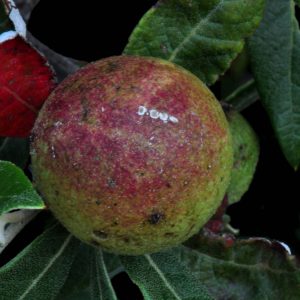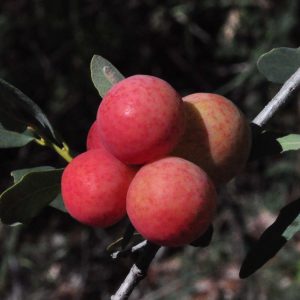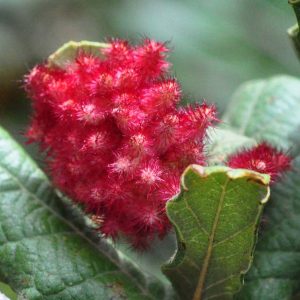As we wander the mountains north of Tucson we often come across unusual growths on plants, especially trees. At first glance they look like some kind of fruit. Since acorns are easy to recognize, the growths on different oak species clearly must be something else. It turns out that they are galls. These are formed by the tree in response to an irritation by an insect, mite or fungus. Here are three different oak species with their galls:
Silverleaf oak – (Quercus hypoleucoides) – This gall is a perfectly round sphere, about the size of a ping-pong ball. This is formed by a wasp that lands on a twig, irritates it in some way, and then deposits eggs in the growing gall. The eggs are well protected (and fed) as they develop. Once I cut a gall open. At first I thought there was nothing in it – just a little dark spot at the very center. Taking out my loupe I noticed that the black spot was actually a group of maybe a half dozen tiny little wasps. When the wasps hatch they eat their way out of the gall, leaving a perfectly round hole to show their exit.
Once I saw a very different collection of galls on the Mexican Blue Oak (Quercus oblongifolia). These were also little red spheres.
More recently we were hiking at about 8000′ with the Net Leaf Oaks (Quercus rugosa) which had galls, all on the underside of the leaves. Instead of a nice round gall, it is more like a very hairy red mass. We found that the mass consisted of a number of cylinders, each of which contained wasp larva.
SMALL WONDERS TALK
I have been working for several years on a book about the nearly invisible flowers that do not make it into most flower books. This coming Thursday, September 14, 2017, I will be giving a talk to the Tucson chapter of the Arizona Native Plant Society, 7 pm at the City of Tucson Ward 6 Office, 3202 East 1st Street. This is south of Speedway Boulevard and east of Country Club Road. I would love to see you there and share over 60 species worth a closer look. Here is one whose name, Eucrypta micrantha means “well hidden small flower”. The “well hidden” refers to the seeds. The common name is Dainty Desert Hideseed.





Congratulations on getting your book to the editor.
The flowers are a delight.